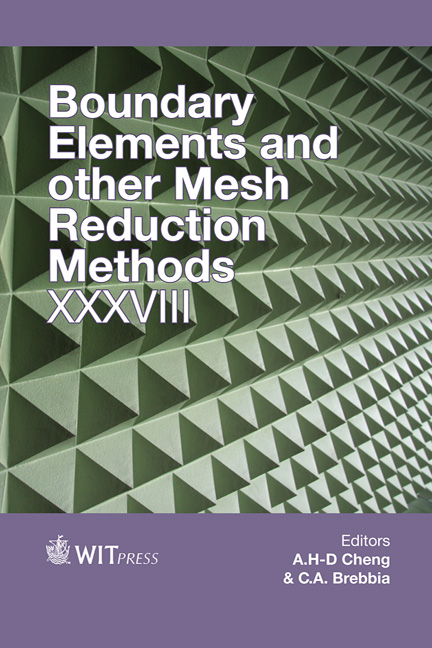A BEM Method For Electromagnetics In Complex 3D Geometries
Price
Free (open access)
Transaction
Volume
61
Pages
16
Page Range
311 - 326
Published
2015
Size
1,601 kb
Paper DOI
10.2495/BEM380251
Copyright
WIT Press
Author(s)
P. L’Eplattenier, I. Çaldichoury
Abstract
An electromagnetism module is under development in the commercial software LS-DYNA in order to perform coupled mechanical/thermal/electromagnetic simulations. The main part of the module is a so-called “eddy current” solver. This module allows us to introduce source electrical currents into solid conductors, and to compute the associated magnetic fields, electric fields, induced currents, Lorentz forces, Joule heating and so forth. The Maxwell equations are solved using a Finite Element Method (FEM) for the solid conductors coupled with a Boundary Element Method (BEM) for the surrounding air (or insulators). Both the FEM and the BEM are based on discrete differential forms (Nedelec-like elements). The use of the BEM for the air allows to handle complex 3D geometries with multiply connected conductors, very small air gaps, and motion of the conductors, due, in particular, to the electromagnetic forces. The variable of the BEM is a so-called “surface current” allowing the connection of the model to external current sources by simple dirichlet constraints, as well as direct computations of the self and mutual inductances of the system. In order to handle the large and dense BEM matrices, a domain decomposition is performed and low rank approximations are done on the off-diagonal blocks of the resulting block matrices. The diagonal blocks are used as an efficient preconditioner when solving the BEM part of the system. The singularities arising in the computation of the self and neighbor matrix elements of the Galerkin BEM are taken into account using a method based on Duffy transforms. The BEM method will be presented as well as benchmarks and real life application examples.
Keywords
eddy current, finite element method, boundary element method, Nedelec elements, contact, coupled mechanical/thermal/electromagnetic simulations





